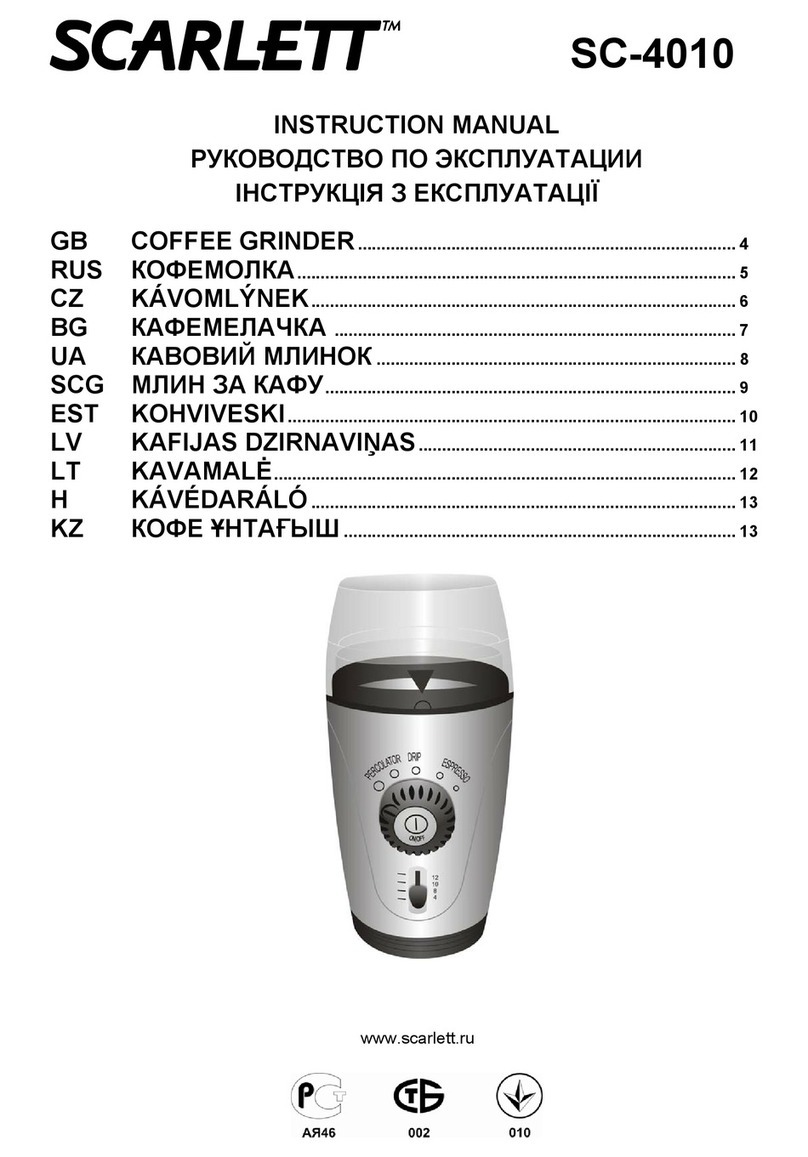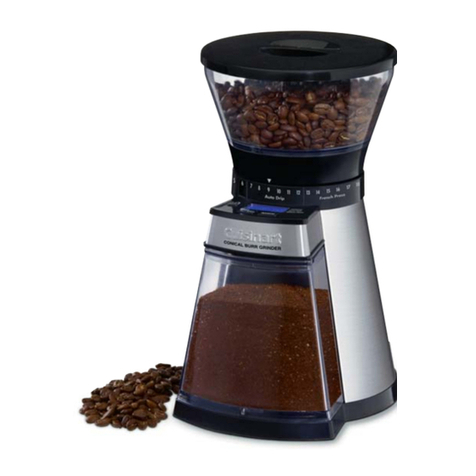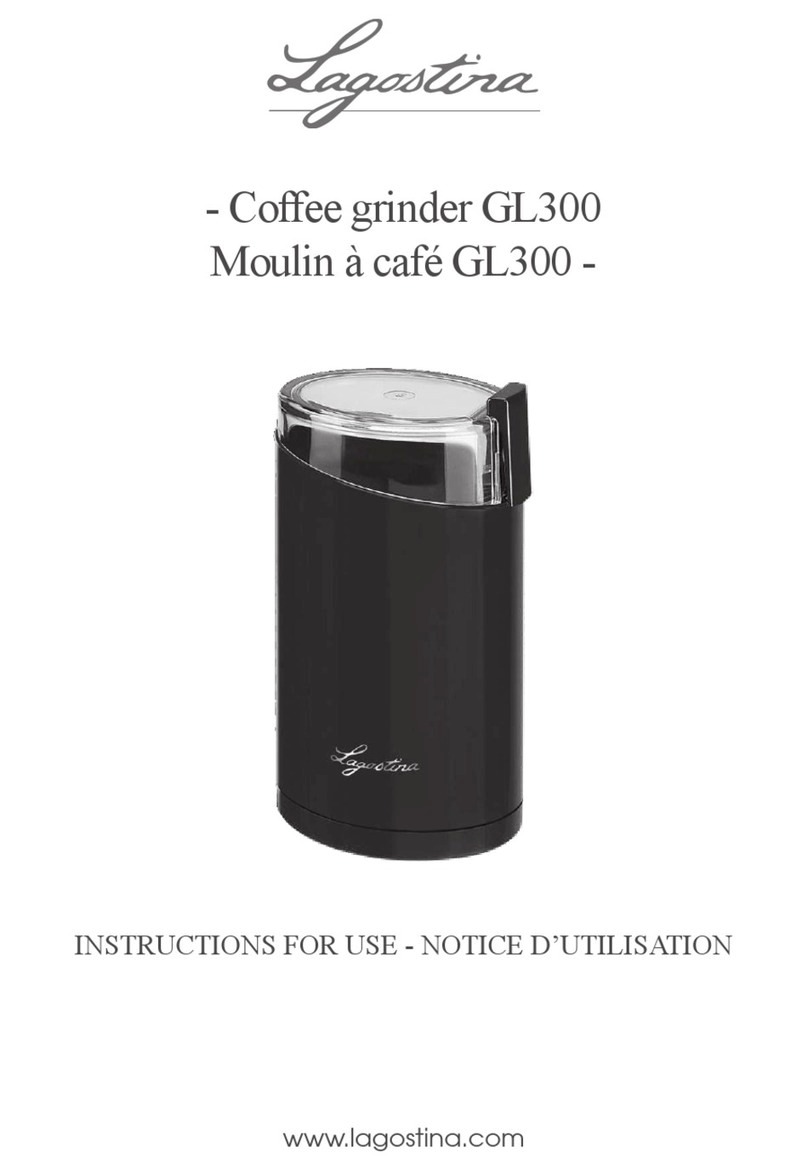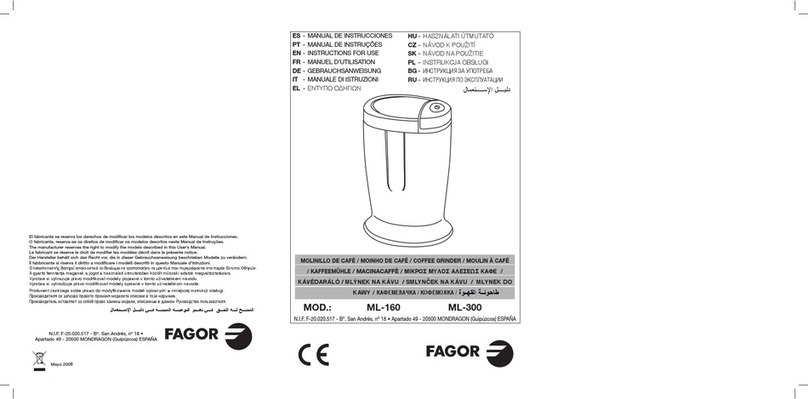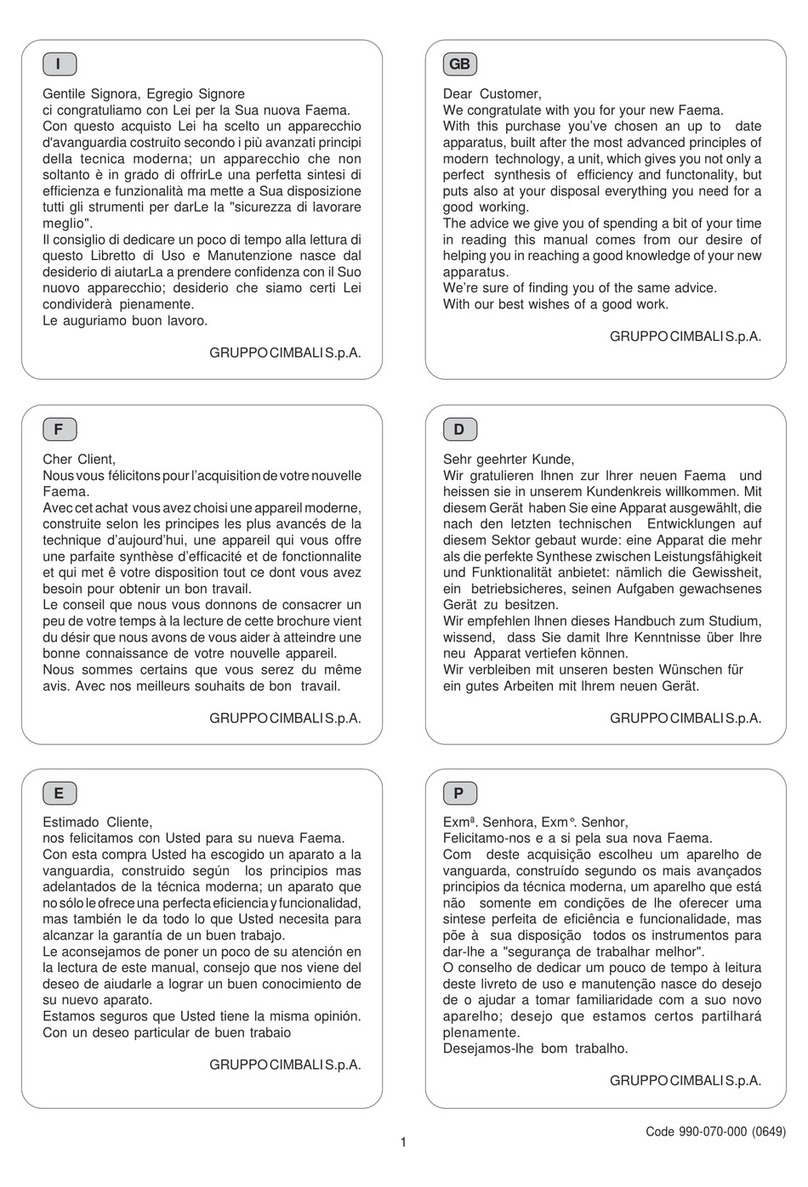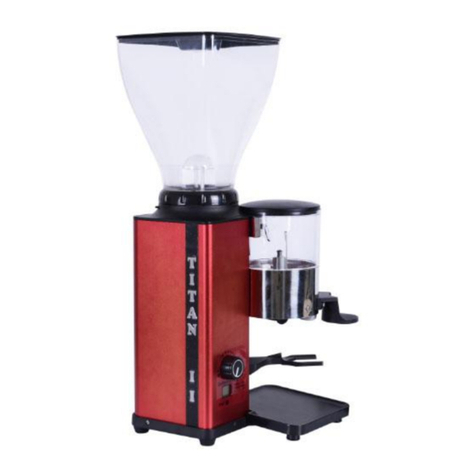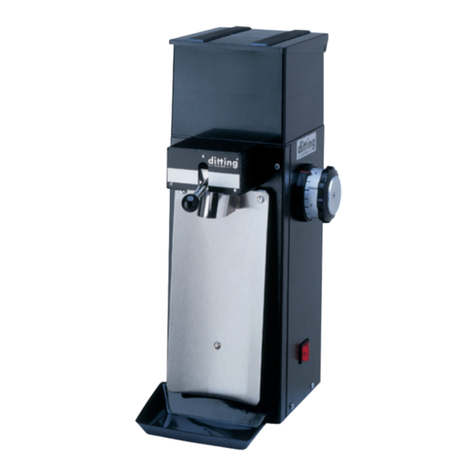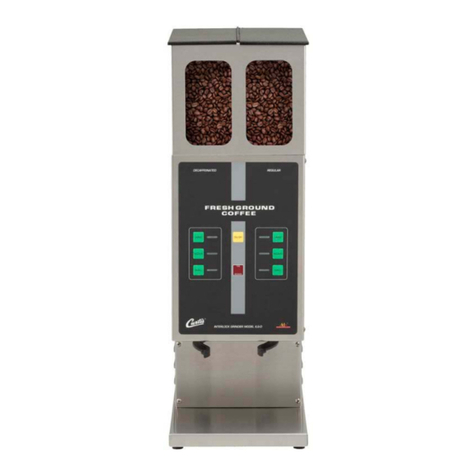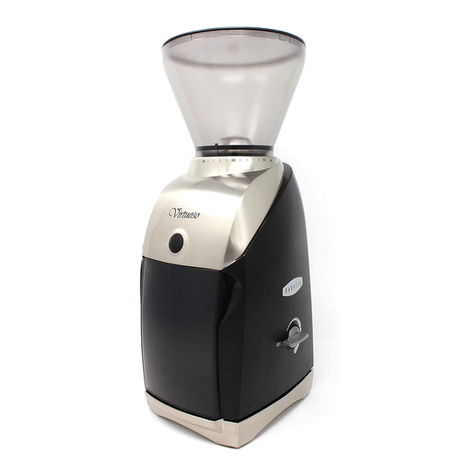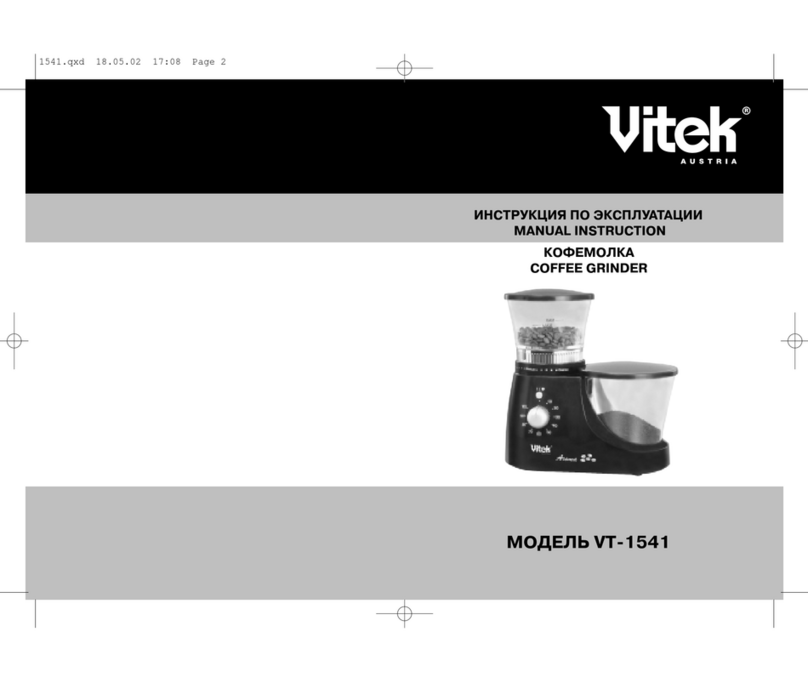PROKRAFT PKR CGA Coffee Grinder Mill Kit User manual

Guide to making a turned box with a drawer for mounting the
Prokraft PKR CGA Coffee Grinder Mill Kit
What follows is a pictorial guide to making a turned coffee box with pull out drawer, it is not an
instruction sheet and depending on your skill and equipment you may have other ways to complete
a similar project but we hope this will be a good starting point.
We started with rough sawn sapele – planed would have been better to complete the project
however our planer/thicknesser didn’t want to play nicely, or actually at all!
The tools we used are as follows:
45mm forstner bit
3.5mm HSS drill bit
8.5mm HSS drill bit (for fitting the brass knob)
Hacksaw (for fitting the brass knob)
Jacobs chuck
Pillar/bench drill
Wood lathe
Lathe chuck/dovetail jaws
Bandsaw
Belt sander
We started with 4 square sections (ours were 170mm2 and 30mm thick, we would not use less than
120mm2), 2 of them were glued together to make the drawer sections
You will see that we have marked out with a compass 2 circles
which will be the inner and outer walls of the drawer.
We have then drawn 2 parallel lines from the widest points of the
circles to the front of the drawer – these come out at a slight angle
to make sure we can pull the drawer out cleanly.
If you pointed them inwards you would make a nice drawer that
would not pull out!
Next we cut around the outer pencil mark on
the bandsaw:

We then take our other 2 square pieces of timber and use them to sandwich the draw cut-out to
make a very rough box. Glue and clamp the parts and when dried you should have something that
resembles the following:
We had to sand the drawer a
little to get it to slide back into
the box – mainly as our wood was
rough sawn.
We are then ready to look at mounting ready for turning.
The box is going to be turned with the drawer inside so we need to make sure it is really secure
before we start to spin it.
We began by drilling a 45mm hole in the top 10mm deep so we can mount it on our 4-jaw chuck on
the lathe.
We add a couple of shims either side of the drawer to get it tight and in the correct location and then
we drill through the top and screw using a self- tapping woodscrew through the top and into the top
of the drawer – this will stop it flying out when turning.
The screw is installed and we have trimmed off the corners on the
bandsaw to save a bit of mess and make turning a little easier.
Then we can mount on the lathe and start to turn the box round.

When we have got it roughly round we mount a jacobs chuck on the tailstock and drill another
45mm hole approx 10mm deep so we can turn the box around when we have finished the sides and
bottom:
When we have done this
we then use a 3.5mm drill
bit to drill just into the
bottom of the drawer section.
This is to mark a centre
point on the bottom of
the drawer for later
We can then finish turning and sanding and adding any finish to the sides and bottom of the box.
We actually did final finishing on a polishing mop system rather than on the lathe as there are some
parts that cannot be reached whilst mounted on the lathe.
The project can then be inverted and the top finished in the same way.
Do make sure your workpiece has as much support at both ends when turning as possible:
When you are happy with
the outside, the screw can be
taken out and the drawer
removed.
Here you will see the small
hole we made with the 3.5mm
drill bit in the bottom of the
drawer section:
Now we can look at hollowing out the drawer.

To do this you can use several methods, you could simply drill the wood out, or use a router but
here we are going to re-mount on the lathe and hollow out with turning tools.
The point marked on the bottom of the drawer gives us the centre point for drilling another 45mm
hole 10mm deep (it can be shallower depending on your bravery!)
Having drilled out we can then re-mount on the lathe and hollow out:
Take extra care with the drawer - as it is not round it will be out of balance on the lathe – start at a
slow speed and gradually increase to get a stable suitable turning speed.
Once hollowed and sanded you can add some finish if you wish.
Now it is time to fit the drawer into the body – this is the test of how accurate a fit you had to start
with.
If the drawer does not fit correctly there are several ways to adjust it:
1] refit the drawer and screw in again as far as it will go – re-mount and turn down further on the
lathe.
2] Add a self tapping screw at the rear of the drawer that can be screwed in and out to adjust the
final depth
3] Sand level on a belt sander – this may depend on the profile you have turned your project – we
used this method as our profile was quite flat.
Sand, finish and polish – now to add a knob for the drawer.
We used one of our solid brass knobs however the machine screw was not long enough to go
through the drawer front and we cannot get inside the drawer to drill it out!
This is easily overcome and is a useful trick when fitting small knobs to thick wood:

The thread is 4mm diameter, so first we drill a 3.5mm pilot hole to the required depth (this depends
on your machine screw length) the we screw it in using a normal screwdriver to start to cut a thread
into the wood.
Then unscrew the screw, put it in a vice and cut the head off with a hacksaw.
Screw the threaded part into the knob and it can then be screwed into your pilot hole.
However…...our project is round and the end of the knob is flat – so before fixing we drill a shallow
8.5mm rebate into the drawer to inset the brass knob slightly so it appears to fit perfectly.
The final part is to take the box back to the pillar drill and drill the 45mm hole all the way through
the top of the box, mark and drill the pilot holes for the coffee grinder mill kit and bolt it on.
You then have a completed box with drawer and a quality ceramic grinder that is sure to impress:
After all that you probably deserve a cup of coffee!
Prokraft® Copyright 2020. www.prokraft.co.uk
Table of contents
